Gamification has become one of the most misunderstood and badly executed concepts on the web over the last few years. Many sites attempt it and very few succeed.
This happens because gamification has it own challenges and complexities which are often overlooked. Just like user experience design, the site’s gamification system must to be tailored to the users. Below we’ll take a look at the basic principles of gamification, the main user/player types and run through some real world examples to get you started.
What is gamification?
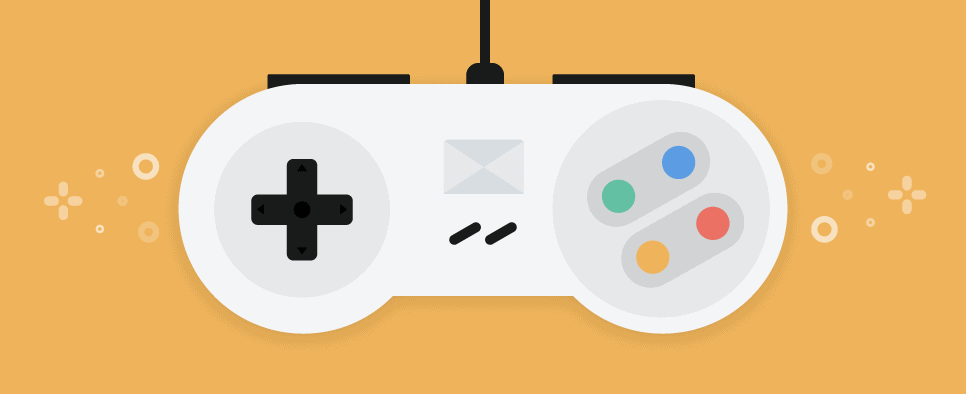
In layman’s terms, gamification is applying gaming mechanics to a non-gaming environment such as a website or app. Those who implement it correctly see an increase in sales, better user engagement and gain an edge over the competition. Gamification is a way to enhance the user experience.
Why is user experience so important? Jakob Nielsen explained it perfectly in the quote below:
On the Web, usability is a necessary condition for survival. If a website is difficult to use, people leave. If the homepage fails to clearly state what a company offers and what users can do on the site, people leave. If users get lost on a website, they leave. If a website’s information is hard to read or doesn’t answer users’ key questions, they leave. Note a pattern here?.” – Jakob Nielsen
Simply put, gamification is a reason for your users to choose you over the competition. It’s a way to create a memorable experience and help your users enjoy using your product or site.
1. Identify the main player types
Game designers have a range of systems to help identify which game mechanics will ideally suit the types of players they’re trying to attract. For gamification however, a more broad (all encompassing) approach can be taken. Richard Bartle’s 4 player types is popular among game designers targeting a wide range of players.
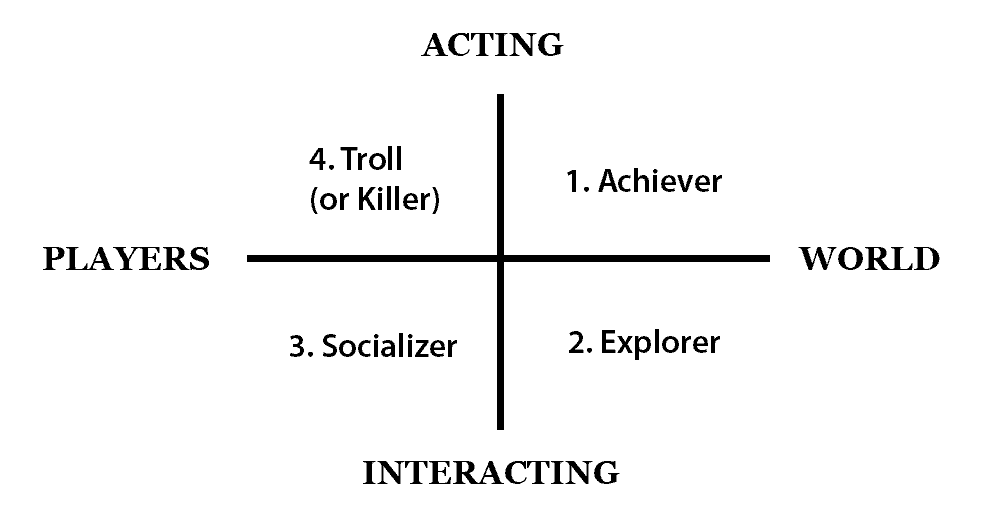
As seen above, the players are grouped into 4 categories: achiever, explorer, socializer and troll. Each player type is motivated by different factors. These can be further segmented into intrinsic and extrinsic motivations.

 1. Achiever – These player types are motivated by predetermined in-game goals. They derive their sense of enjoyment from being the best. Being extrinsically motivated, the achiever needs a clear goal and scale to determine how well they’re performing the task. Once performed, they need a way to show off their achievement to others. A good way to motivate these players is to include points, progress bars, breadboards and small rewards for task completion.
1. Achiever – These player types are motivated by predetermined in-game goals. They derive their sense of enjoyment from being the best. Being extrinsically motivated, the achiever needs a clear goal and scale to determine how well they’re performing the task. Once performed, they need a way to show off their achievement to others. A good way to motivate these players is to include points, progress bars, breadboards and small rewards for task completion.
![]() 2. Explorer – These players are self motivated and seek out their own reasons to interact with your site. Often avoiding the main path in favor of hidden corners and easter eggs. The explorer drives the game forward by discovering new content and sharing information with the other player types. The best way to motivate these players is by giving them freedom to explore and hiding some unexpected easter eggs and achievements.
2. Explorer – These players are self motivated and seek out their own reasons to interact with your site. Often avoiding the main path in favor of hidden corners and easter eggs. The explorer drives the game forward by discovering new content and sharing information with the other player types. The best way to motivate these players is by giving them freedom to explore and hiding some unexpected easter eggs and achievements.
 3. Socializer – These player types are less affected by the content than they are by the community of other players. Motivated extrinsically, it is important for them to have a way to share their opinions, discuss the content with other players and receive feedback. The socializer will be happy as long as there is enough social feedback for their actions. Adding like, share and comment actions is a good way to keep these users engaged.
3. Socializer – These player types are less affected by the content than they are by the community of other players. Motivated extrinsically, it is important for them to have a way to share their opinions, discuss the content with other players and receive feedback. The socializer will be happy as long as there is enough social feedback for their actions. Adding like, share and comment actions is a good way to keep these users engaged.
![]() 4. Troll – Trolls set their own goals of annoying other users. Just like the socializer they require feedback to know they are being annoying. They gain pleasure from knowing they got a reaction out of another person. Despite popular belief, trolls actually serve the common good of keeping the socializer population in check. If the socializer population grows faster than others (and they tend to), the achievers and explorers leave because they don’t enjoy this kind of environment.
4. Troll – Trolls set their own goals of annoying other users. Just like the socializer they require feedback to know they are being annoying. They gain pleasure from knowing they got a reaction out of another person. Despite popular belief, trolls actually serve the common good of keeping the socializer population in check. If the socializer population grows faster than others (and they tend to), the achievers and explorers leave because they don’t enjoy this kind of environment.
2. Make it Fun
Now that we know who we’re targeting and how to motivate them, let’s look at how to structure the game to make it fun. If the content is not engaging the users, no player type will be interested enough to stick around. At the bare minimum, the content should include the following:
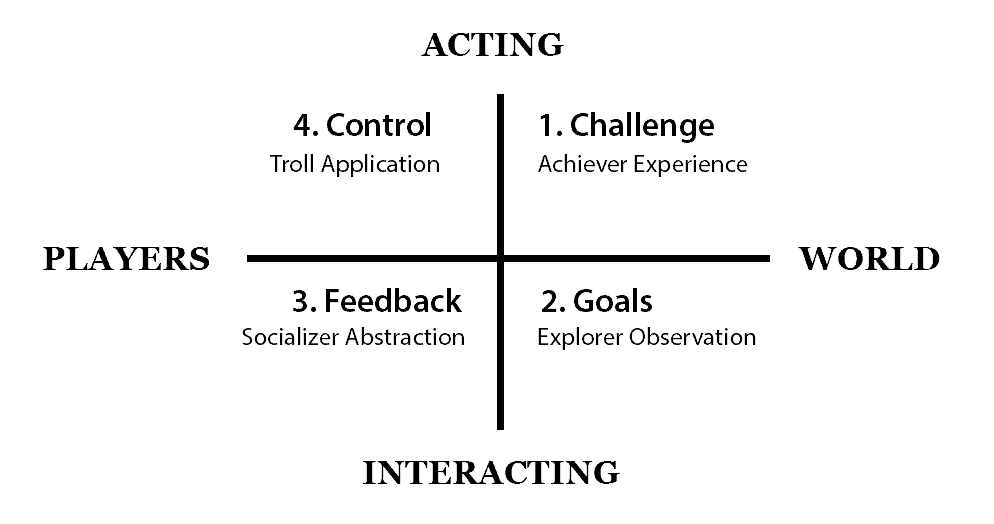
Challenges – These goals must be clearly defined and easy to understand. The tasks must offer a small reward for task completion. This will motivate your achiever users and bring them to the site.
Goals – Aside from challenges, the game must have clear big picture goals. Why are your users here? What is the purpose of completing tasks? These big goals will attract explorers to your site who in turn will find and set new challenges for the achievers.
Feedback – The game should provide clear and consistent feedback on how your users actions are impacting the game. Without this, your users will be lost and will not stick around long enough to discover the content. To accommodate socializers, system feedback in not enough. Player feedback is required.
Control – The game should make your users feel in control. This is similar to, but extends beyond, feedback. Feedback is input and response. Control is having the power to manipulate the outcome of the response.
3. Put It Into Practice
At this stage you may be thinking, “that’s all great, but how can I make this work for me? How do I start planning a gamification system?” To make it easier, let’s go through an example.
You’re an online e-commerce retailer selling clothes. You want to increase your sales and encourage people to come back to your store.
First, you need to decide which player types you want to target with gamification. You can choose a couple or include them all. Remember that the more types you choose to include, the more complex the system has to be.
You’ve decided to target everyone except trolls because they don’t bring as much profit as the other types. Also, their actions may offend the other users.
Here is how your gamification system could look:
A user lands on your page and they’re prompted to sign up to receive a discount. Instead of being met with a boring “enter your information” screen they are asked to create their own style instead. 5-10 articles of clothing are displayed and they asked to choose the ones they like the most. They may have the option to continue to profile creation (name email etc) or keep playing the mini-game and selecting more items.
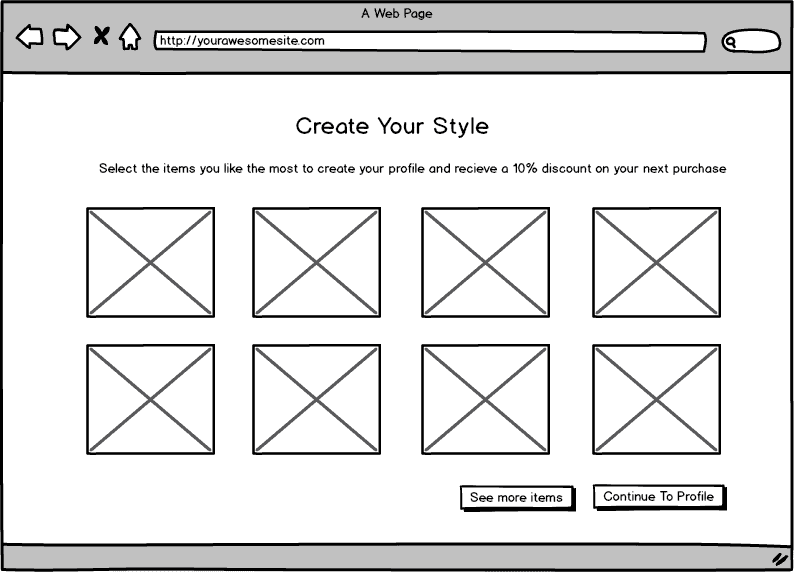
The results of their selections could give their style a name eg (city chic, country, business, smart casual etc). These results can then be displayed on their public profile. (This is also a good opportunity to save the results and offer them those articles of clothing later.)
Their profile could prompt them to create their own outfits from the clothes sold on your site. They could have the option to share those with other users. You can offer discounts for creating outfit sets and then suggest these combinations to other users.
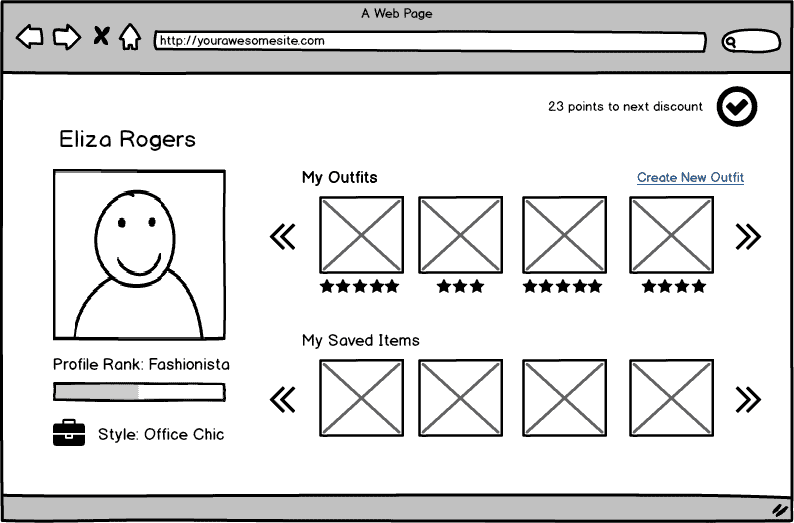
You can then add a rating system for outfit sets so other users can contribute. You can offer discounts periodically for creating outfits and display leader-boards of the users who contribute the most.
You can even go a step further and offer hidden discounts when users choose to group 2 certain items together.
The Results:
By gamifying the shopping process you’re increasing user engagement and building a community. The simple idea of adding a profile and allowing users to create outfits achieves the following:
The achievers are interested by the task itself. They are being rewarded with discounts on the items they want while having fun brainstorming ways to combine the pieces into outfits.
The explorers are intrigued by the hidden discounts they receive when playing the game. They are on the lookout for new items and combinations.
The socializers are thrilled to share their outfit ideas with others on the site and beyond (on their social networks). The outfits they create are getting ratings which is giving them ongoing motivation.
The trolls are kept at bay by a moderated comments section and cannot interfere with the other types.
You as the business:
- Can easily identify which items and item combinations are the most popular
- Can quickly get rid of surplus stock by offering discounts on those items. The outfit sets help to sell the items.
- Can easily up-sell the customers by offering them a certain “look” or “style”
- Have a good idea of the types of shoppers your site attracts by their profiles
- Have a collection of user created outfits to share on social media
- Have a community of users loyal to your brand
This is only one example of how gamification could be implemented into your site. Any site or application can take advantage of gamification with a little effort and creative thinking.
Have you tried implementing gamification? Let us know in the comments below!
